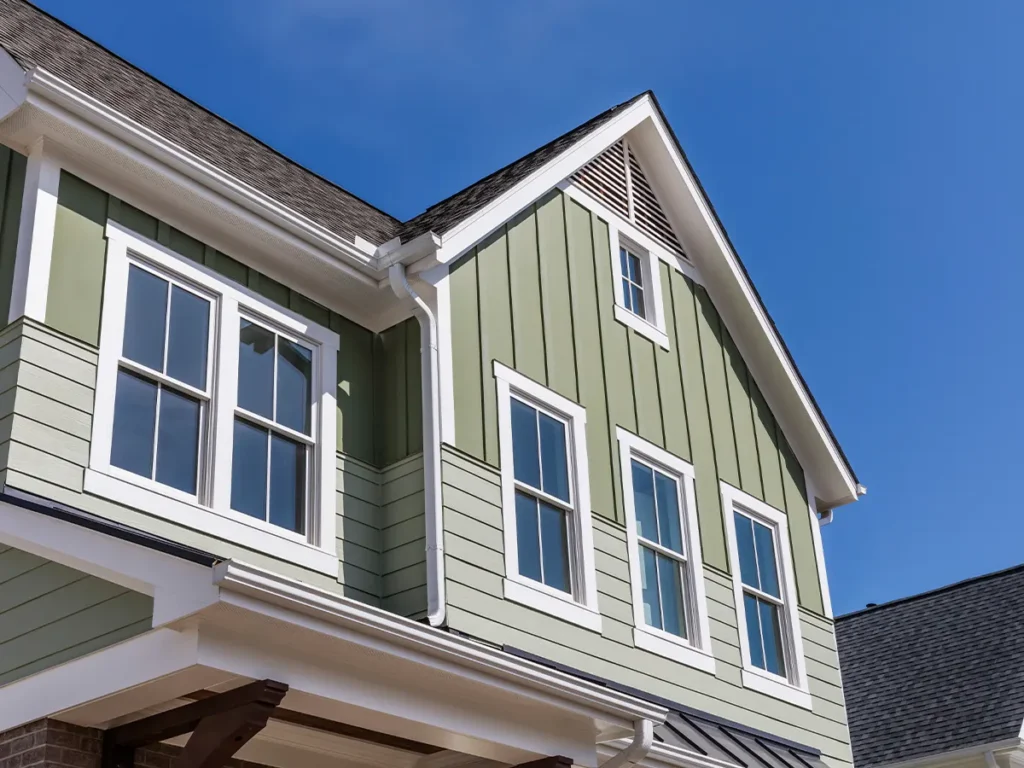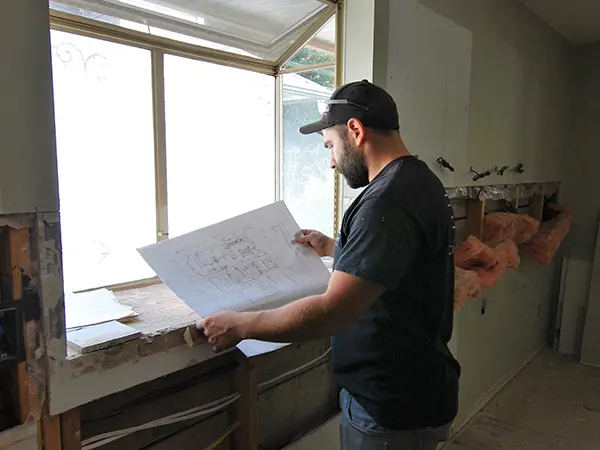Your house siding is more than just a pretty face. It’s the frontline defence against the elements, safeguarding your home from wind, rain, snow, and even pesky critters. But like any shield, the siding can weaken over time. So, how do you know when your trusty warrior needs to be repaired or replaced? Don’t worry, homeowner hero! This blog will equip you with the knowledge to spot the signs of weary siding and get your home’s exterior back in fighting shape.
Table of Contents

Types of Siding
There’s a variety of siding options available, each with its own advantages. Here’s a brief overview to help you consider the best fit for your home:
-
Vinyl Siding:
A popular choice due to its affordability, durability, and low-maintenance requirements.
-
Fiber Cement Siding:
Offers a realistic wood look with superior weather resistance and fire protection.
-
Metal Siding:
Incredibly durable and long-lasting, but can be more expensive than other options.
-
Wood Siding:
A classic choice that provides a beautiful aesthetic, but requires regular maintenance.
Common Culprits: Signs of Siding Distress

-
Cracks, Gaps, and Holes:
These unwelcome visitors are more than just eyesores. They act as open invitations for moisture to seep into your home’s walls, potentially leading to rot, mould, and structural damage.
-
Warping and Bulging:
Is your once-smooth siding looking like a funhouse mirror reflection? This warped and uneven appearance can be caused by moisture trapped behind the siding, a sure sign of compromised protection.
-
Peeling or Missing Paint:
Think of paint as your siding’s superhero suit. When the paint peels or flakes away, it exposes the underlying material to moisture and weakens its ability to defend your home.
-
Rotting Wood:
For homes with wood siding, keep an eye out for discoloration, a spongy texture, or crumbling wood. These are all telltale signs of wood rot, a serious problem that requires immediate attention.
-
Increased Utility Bills:
While unexpected spikes in your energy bills could have various causes, they might also be a sign of compromised siding. If your home is struggling to maintain a comfortable temperature, it could be due to gaps or inefficiencies in the siding’s insulation.
-
Interior Water Damage:
Even if your siding’s exterior seems okay, be sure to check for signs of water damage inside your home, such as water stains, peeling wallpaper, or mould growth. These issues can originate from undetected leaks in your siding.
Remember: Ignoring these signs can lead to costly repairs down the road. By taking proactive steps to address your siding concerns, you’ll ensure a safe, secure, and beautiful home for years to come.
Repair or Replace? Choosing the Right Course of Action

The extent of the damage will determine whether your siding needs a simple repair or a complete replacement. Here’s a quick guide:
-
Minor Issues:
For small cracks, gaps, or missing paint, repairs might be sufficient. A qualified contractor can patch up the problem areas and ensure your siding remains watertight.
-
Widespread Damage:
If the damage is extensive, covering a large portion of your siding, replacement might be the best option. This ensures your home receives a complete layer of reliable protection.
Bonus Tip:
Regular maintenance is key to preventing problems. Regularly inspect your siding for any signs of damage and clean it according to the manufacturer’s recommendations.
Trust City & Country Contracting For Your Siding Repairs And Replacement
At City & Country Contracting, we understand the importance of a strong and reliable siding system. Our team of experienced professionals can assess your siding’s condition, recommend the best course of action, and handle repairs or replacements efficiently and meticulously.
Don’t let a weakened defence leave your home vulnerable. Contact City & Country Contracting today for a free consultation and ensure your home continues to stand strong for years to come!
Read More
The Complete Guide To Window Replacement: From Selection To Installation
Navigating Building Codes And Regulations For Door Installation Projects

